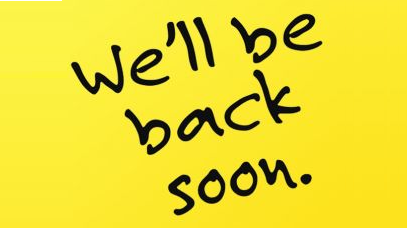So here we are on the final approach to 2025. November is halfway over, people are safely strapped into their seats, and the landing gear is lowered. It has been a wild ride for many. I am thinking about my holiday poem and whether or not I can keep the politics of 2024 out of it. Is that a fool’s errand? I don’t know yet. The muse has not yet struck.
I am staring at 11 Post-it notes on my monitor, at least one of which has been there for two years. I am also four years into writing my blog and slowly concluding that I will not add more blog article topics to the list.
That’s right. My weekly writing exercise is coming to an end soon.
There are several reasons why I write my blog.
I wanted to catalog many moments in my life and document the decision points for other people on parallel journeys.
I wanted a written body of work to help demonstrate value as a future mentor for people who wanted one.
I wanted to improve my writing skills for personal and professional purposes.
I wanted to give people who are facing a major decision or career change a body of information to contemplate so they are more informed and can confidently make the wrong choice.
I wanted to have a place where I could read about something happening in the industry, smugly rant about it, and know that at least six or seven people would read it.
There may be one or two other reasons, including the ongoing Amazon Affiliate Marketing jokes. I guess maybe I am sad I never made a hunnert dollars off of stuff that nobody would click on, and I guess everyone figured out that my stealing nickels from Jeff Bezos meant they had to spend like… ten bucks, and that is like five dollars in 2021 terms, which is more than a substack subscription, so I get it.
I just wanted to give a quick “Hey, I am going to be closing the store soon” note as I download the last articles into tHe ClOuD.
This week, I wanted to talk about habits and reporting.
If you have read any books on habits, you will understand that habit forming is hard. Some percentage of good designer success results from understanding the hacks to create a new player habit. Some percentage of them have simply borrowed the patterns from craft masters without realizing it. These two groups represent most people who don’t get fired as designers.
You must develop new habits as you enter leadership and management roles. I will not try to convince you of this; it is an absolute truth. You must develop new behaviors for thinking, collaborating, and communicating.
When thinking about the communication patterns you need to develop, you should also think about the frequency of those communication patterns. What do you need to do daily? What do you need to do weekly? What do you need to do monthly? What do you need to do quarterly?
Due to repetition, daily habits solve for themselves pretty quickly. Monthly ones are easy to put into calendars. There is nothing like Clippy popping up once a month and saying, “Hey, you need to write a report. Would you like me to help you?” with his adorable little clipart eyes blinking at you.
In my opinion, the weekly habits are the hardest to create. They are not frequent enough to be habituated easily as a matter of regular activity, and they are not so infrequent that you can outsource the habit to Outlook (or some other calendar manager) to remind you to do something. I have been trying to unpack some additional difficulties in creating weekly habits. I have not gone to brain-hacking school enough to give you a chemical understanding of what is happening.
For a growing company, this is important because you want to build in some good weekly mechanisms as soon as possible. For example, creating a weekly team status report, which helps inform progress toward longer-term goals, is an excellent habit.
In an ideal world, you should have a team lead create an end-of-week status report that can be rolled up with other team lead status reports into a departmental report. A bunch of departmental reports can be synthesized into an executive report. Depending on how many layers of management exist in your organization, two (or three or four) layers of reports get merged into a collection of reports to give the One True Report at an executive level that helps senior leadership make strategic decisions.
These reports can help you spot and debug organizational problems.
When building a company from “zero to one, “ you often skip a lot of process and organizational work. There is organizational violence in creating new companies and products that people try not to consider. Building your weekly, monthly, and quarterly habits often gets bolted onto the company in a hurry and often with very little consideration because you do not start that process until a month or six after you need it.
You should keep this in mind when starting or scaling up a company. One of the harder things you will do is figure out the right processes to enable comfortable growth and scaling.
Start by creating weekly reports. It is hard to build the habit, and people do not immediately see the value. If you do not succeed, your business will experience very painful and chaotic growth. Over the years, I have learned that some of this pain and chaos can be avoided, and weekly reporting is one of the tools to help.
See you next week!



